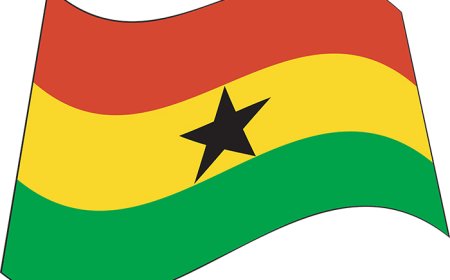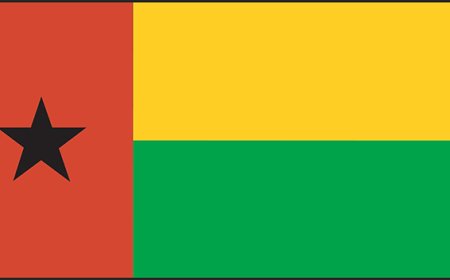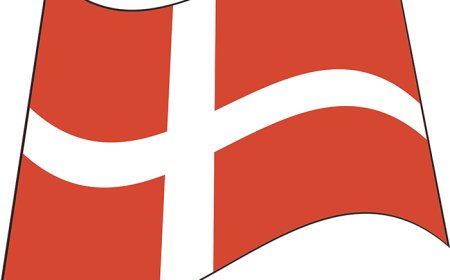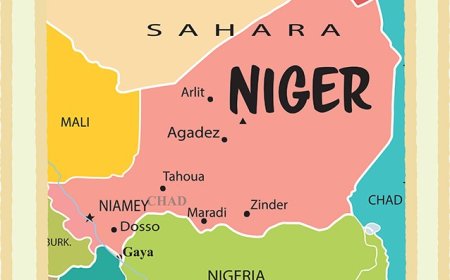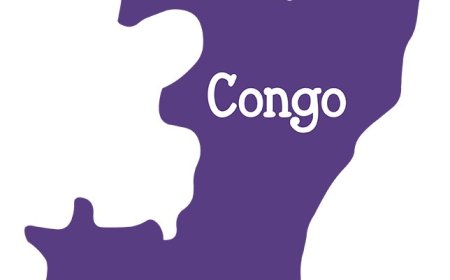Cameroon for Students: Geography, People, and Culture of Africa in Miniature
Learn all about Cameroon’s geography, people, languages, and environment in this student-friendly country profile. Includes vocabulary, quiz, and summary.
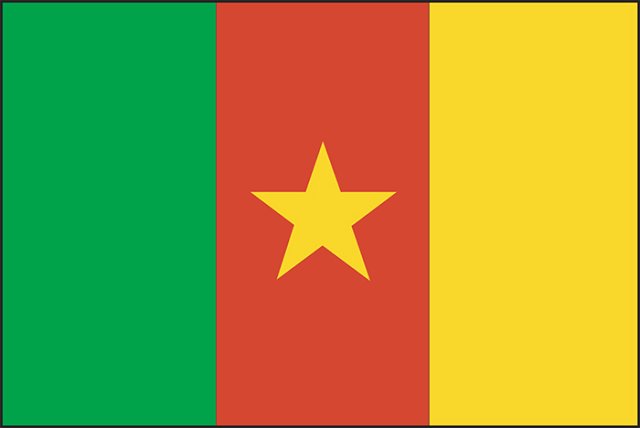
🌍 Introduction: A Land of Many Worlds
Cameroon is a country in Central Africa that contains nearly every kind of African landscape—from rainforests and deserts to high mountains, lakes, and coastal plains. Because of this incredible variety, it is often called “Africa in miniature.” Cameroon’s people are just as diverse, speaking over 250 languages and practicing different religions and traditions. From the active volcano Mount Cameroon to the busy streets of Yaoundé and Douala, this country is full of life, color, and complexity.
🗺️ Geography and Environment
Cameroon is located in Central Africa and shares borders with Nigeria, Chad, Central African Republic, Republic of the Congo, Gabon, and Equatorial Guinea. It also touches the Atlantic Ocean on its western coast.
Geographically, Cameroon is shaped like a triangle and stretches from the wet, tropical coast in the southwest to the dry Sahel region in the north. Its landforms include:
Mount Cameroon, an active volcano and the highest point in West and Central Africa (4,095 meters / 13,435 feet)
The Adamawa Plateau in the center, covered with grassy hills and savannas
Dense rainforests in the south and east
Lakes and rivers, including Lake Chad, Sanaga River, and Benue River
This diversity creates habitats for many species of wildlife, including elephants, chimpanzees, crocodiles, antelope, and hundreds of birds and butterflies. The country is working to protect nature through national parks like Waza, Dja Faunal Reserve, and Korup National Park.
🏛️ Government, Language, and Population
Cameroon is officially a presidential republic, but its political system has been controlled by one leader, President Paul Biya, for over 40 years. Though elections are held, the government has been criticized for limiting freedoms and silencing opposition.
The capital city is Yaoundé, while Douala is the largest city and economic center. Both cities are located in the south and are home to universities, cultural institutions, and government buildings.
Cameroon has a population of around 28 million people. It is one of the most ethnically and linguistically diverse countries in the world, with over 250 ethnic groups. The two largest groups are the Fang-Beti in the south and Fulani in the north, but many others live throughout the country.
Cameroon has two official languages: French and English, a result of its colonial history under both France and Britain. However, most people speak a local language at home—such as Ewondo, Bamum, Fula, or Bakweri.
Religion in Cameroon includes Christianity (mainly Roman Catholic and Protestant), Islam, and traditional African beliefs, often blended together in daily life.
🎭 Culture and Daily Life
Cameroon’s diverse cultures are expressed through music, dance, clothing, food, and celebrations. Traditional music uses drums, balafons (wooden xylophones), and singing. Each region has its own dance styles, often performed during weddings, naming ceremonies, and harvest festivals.
In cities, people wear Western-style clothing, while in rural areas, people often dress in colorful, handwoven fabrics. Popular dishes include:
Ndolé (a bitterleaf stew with groundnuts and meat or fish)
Fufu and eru (a dough made from cassava served with leafy greens)
Grilled fish and plantains
Families are close and often include several generations. Children help with chores and often learn traditional skills from their elders. Education is free in principle, but many families struggle with school fees, uniforms, and supplies.
Cameroon also has a growing arts and sports scene. Soccer (called football) is the most popular sport, and the national team, the Indomitable Lions, is a major source of pride.
📜 History: Kingdoms, Colonization, and Independence
Long before European arrival, Cameroon was home to powerful kingdoms like the Kingdom of Bamum, Mandara Sultanate, and coastal trading communities. People traded ivory, salt, and slaves with nearby regions.
In the late 1800s, the area was claimed by Germany and became Kamerun. After Germany lost World War I, the land was divided between the French and British and governed as French Cameroon and British Cameroons.
Cameroon gained independence in 1960, with parts of the British territory later joining to form today’s Republic of Cameroon. However, language divisions between French and English speakers remain a serious issue. In recent years, conflicts have erupted in English-speaking regions where people feel underrepresented in national politics.
Despite these challenges, Cameroon remains one of Africa’s most culturally rich and geographically varied countries.
💰 Economy and Resources
Cameroon’s economy is mixed, with industries including:
Agriculture, such as cocoa, coffee, bananas, and palm oil
Mining and timber
Oil and gas production
Textiles, food processing, and small manufacturing
Most people work in farming, often growing food for their families or selling crops in markets. Cameroon is one of the leading African producers of cocoa and bananas, which are exported worldwide.
While the economy is growing, poverty and unemployment are still problems, especially in rural areas. The government is working to improve infrastructure, roads, electricity, and access to clean water and education.
🌿 Wildlife and Natural Beauty
Cameroon is home to some of Africa’s most beautiful natural areas. National parks like Korup and Dja Faunal Reserve protect thousands of plant and animal species. You can find:
Gorillas, monkeys, chimpanzees
Rare birds, butterflies, and reptiles
Towering rainforests, grassy savannas, and volcanic mountains
In the far north, Waza National Park offers views of elephants, giraffes, and lions, similar to classic safari landscapes.
Mount Cameroon, near the coast, is an active volcano and a popular destination for hikers and scientists alike. From its slopes, visitors can see forests, farmland, and the Atlantic Ocean.
📚 Vocabulary List
Word Definition
Mount Cameroon The highest mountain in Cameroon and West-Central Africa
Yaoundé The capital city of Cameroon
Fufu A starchy food made from cassava or yams, common in West and Central Africa
Rainforest A dense forest with heavy rainfall, often near the equator
Sahel A dry area of land between the desert and the savanna
Ethnic group A group of people with a shared culture, language, or ancestry
Indomitable Lions Nickname of Cameroon’s national soccer team
Dja Reserve A major rainforest and UNESCO World Heritage site in Cameroon
🧒 Kid-Friendly Summary
Cameroon is a country in Central Africa with beaches, forests, deserts, and mountains—so many landscapes that it’s called “Africa in miniature!” People speak French, English, and lots of local languages. The food is spicy and tasty, and music and dancing are everywhere. The capital is Yaoundé, and Mount Cameroon is the tallest mountain. Cameroonians are proud of their soccer team and their many cultures!
🎯 Interactive Quiz: What Do You Know About Cameroon?
1. What is the capital of Cameroon?
a) Douala
b) Bafoussam
c) Yaoundé
d) Bamenda
✅ Answer: c) Yaoundé
2. What is Cameroon’s highest mountain?
a) Mount Kilimanjaro
b) Mount Cameroon
c) Mount Elgon
d) Mount Kenya
✅ Answer: b) Mount Cameroon
3. Why is Cameroon called “Africa in miniature”?
a) Because it is very small
b) Because it has animals in cages
c) Because it has many African environments and cultures
d) Because it’s shaped like Africa
✅ Answer: c) Because it has many African environments and cultures
4. What are Cameroon’s official languages?
a) French and German
b) English and Arabic
c) French and English
d) Portuguese and Spanish
✅ Answer: c) French and English
5. What sport is most popular in Cameroon?
a) Basketball
b) Rugby
c) Soccer (football)
d) Swimming
✅ Answer: c) Soccer (football)
6. What kind of land does the Sahel region have?
a) Rainforest
b) Desert
c) Grassy and dry plains
d) Mountains
✅ Answer: c) Grassy and dry plains
7. What is fufu made from?
a) Fish
b) Rice
c) Cassava or yams
d) Bread
✅ Answer: c) Cassava or yams
8. What is the Dja Faunal Reserve?
a) A city
b) A shopping center
c) A wildlife park and forest
d) A desert
✅ Answer: c) A wildlife park and forest
🏫 National Education Standards Alignment
Geography (NGS Standards):
1: How to use maps
4: Physical and human characteristics of places
6: How culture and experience influence people's perceptions
13: How forces of cooperation and conflict affect regions
History (U.S. History Standards):
Historical Thinking Standards 1–3
Era 7 & 8: The 20th century to the present
Social Studies (C3 Framework):
D2.Geo.4-8, D2.His.1-8, D2.Civ.1-8
Literacy (Common Core):
RI.6.1, RI.6.2, RI.6.4, RH.6-8.7


















































